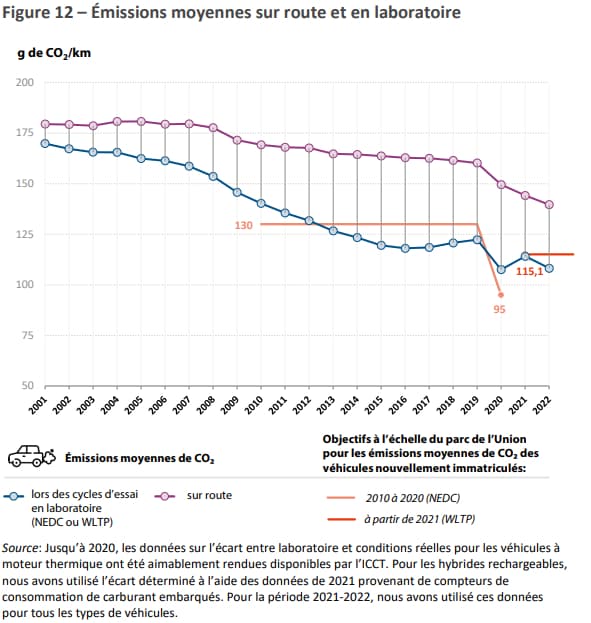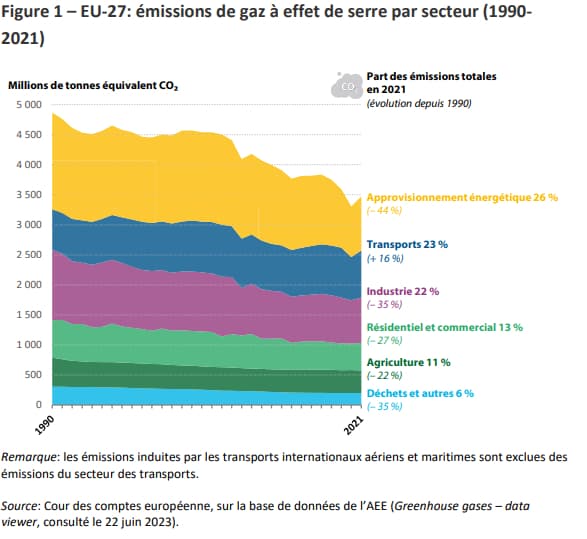While the European Union is targeting sales of new zero-emission cars by 2035, the road still seems long. In fact, only the recent increase in sales of electric cars has had an effect on carbon dioxide (CO2) emissions levels, according to a report from the European Court of Auditors published on January 24.
“Despite strong ambitions and strict requirements, the majority of passenger cars on European roads still emit the same amount of CO2 as 12 years ago,” summarizes a press release.
A recent decline, thanks to electricity
The institution measured the effectiveness of the regulation on CO2 emissions from passenger cars, which has set an EU-wide emissions target for new vehicles since 2010 and, since 2012, specific emissions targets for manufacturers.
According to the Court of Auditors, CO2 emissions from new passenger cars “began to decrease significantly from 2020, that is, 11 years after the entry into force of the first Regulation.”
“Given that emissions in real conditions from vehicles with thermal engines have not decreased, this drop is mainly explained by the significant growth of electric vehicles,” the authors of the report emphasize.
Laboratory efforts that don’t really end on the roads
During the period 2009-2019, the average emissions of new vehicles in real-world use conditions did not decrease, “mainly because manufacturers focused on reducing emissions measured in the laboratory and not on the road.”
Road emissions depend on driver behavior, traffic or the use of air conditioning.
After the Dieselgate episode, with Volkswagen and other manufacturers involved, the authors of the report made it clear that it was not a fraud, but rather a discrepancy between measurements in the laboratory and on the road, with no intention of deceiving regulators.

In 2017, a new cycle of laboratory tests became mandatory for new vehicles received, which better reflects real driving conditions.
“This change made it possible to correct numerous failures that had appeared in the previous test cycle and reduce the difference between the emissions measured in the laboratory and those observed on the road,” analyzes the Court of Auditors.
Supporting the electric transition
However, the targets for reducing CO2 emissions from cars and the EU’s 2030 climate ambitions do not “sufficiently coincide”, the Court concludes.

“The main challenge in meeting emissions reduction targets for 2030 and beyond will be ensuring there is sufficient consumer adoption of zero-emission vehicles. It will be particularly important to make electric vehicles affordable, deploy sufficient charge and guarantee the supply of raw materials necessary for the production of batteries”, underlines the Court of Auditors.
Emissions from the transport sector accounted for 23% of total EU greenhouse gas emissions in 2021, more than half of which came from passenger cars, and continue to grow.
Source: BFM TV

